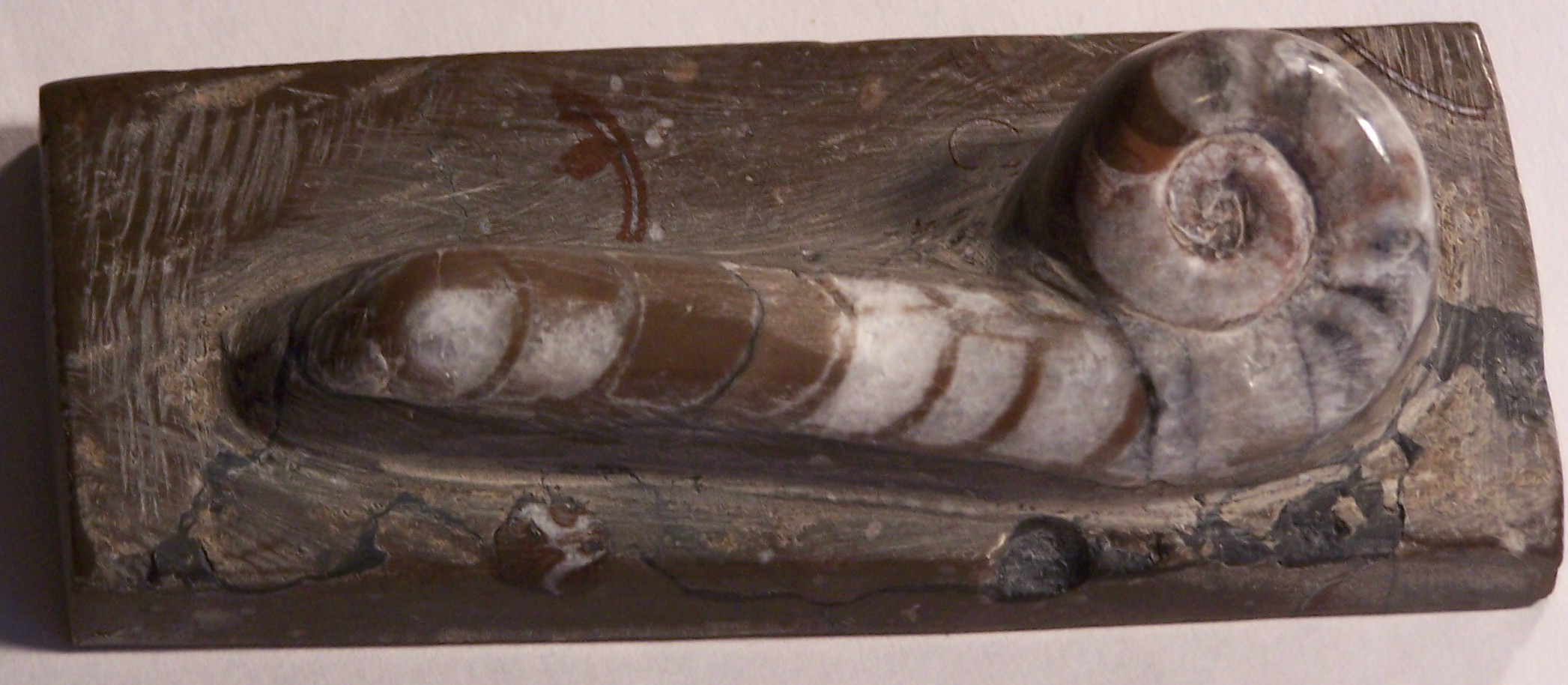- Lituites
Taxobox
name = "Lituites"
fossil_range =Ordovician

image_width = 200px
image_caption = A specimen of "Lituites littuus" from theHunan Province ofChina
regnum =Animal ia
phylum =Mollusca
classis =Cephalopod a
subclassis =Nautiloidea
ordo =Barrandeocerida
familia =Lituitidae
genus = "Lituites"
subdivision_ranks =Species
subdivision = *L. breynius
*L. littuus
*L. undatus
*L. convolvans
*L. angulatus"Lituites" is an extinct
genus of thenautiloid s, and is one of the most primitive knowncephalopod s. It originated in theOrdovician period, around 460 million years ago.Fossil s are mainly found in the region of Hunan,China , but they have also been found in NorthernEurope . The genus "Lituites" includes some of the first cephalopods that could actively swim."Lituites" had early chambers rolled into plane spiral, like
ammonite s. The shell whorls may or may not have joined but were never closely in contact with one another on dorsal side. After the juvenile stage, where the shell begins in a coil, the adult animal would then grow a long, straight or slightly curved section. The shells are distinctive among cephalopod fossils by having this long section and a small ammonite-like coil on the end, looking rather like a traditional shepherd’s crook in form.In adults, the animal's body chamber would occupy the whole of the uncoiled part of the shell. This living chamber is characterized by a slit-shaped mouth opening that broadens into a spout. The principal species are "Lituites breynius", "L. littuus", "L. undatus", "L. convolvans", and "L. angulatus".
The name also appears in the adjective "lituiticone", which means "coiled in the early stage and later uncoiled."
See also
* "
Baculites "
*Orthoceras
Wikimedia Foundation. 2010.
